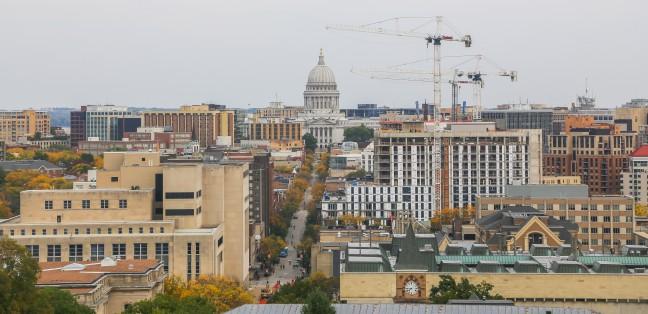When I was in middle school I went to overnight camp in Where Christ Lost his Shoe, Wisconsin. There were probably at least thirty bugs for each person, the lake water was just simply not blue, and my hair still strives to overcome the intense frizz it experienced that summer to this day. Needless to say, I quickly learned that I am not a person who belongs in the outdoors.
For most of my life, I didn’t know there was more to Wisconsin than rural farmlands and campgrounds. But, within just two weeks of living in Madison, I’ve discovered that it is a delightful little nugget of an anomaly of a city within the state and the Midwest region.
While the state of Wisconsin is rapidly losing its population of promising, bright millennials, Madison enjoys the opposite trend.
According to inc.com, “[Madison is] Top 5 in software publishing job concentration and developer salaries while still being 2 percent below the national average for cost of living. Madison has the highest concentration of Millennial talent in the country.”
Young professionals flock to Madison. And, in less of a month of living here, it has come clear why that is.
Of course being the state capitol and having a Big Ten university at its heart naturally causes a city to become more diverse, progressive and welcoming to young adults. However, what really causes Madison to thrive is a feature that every Midwest city has the capability of, and perhaps Madison will be the first in a line of many to come.
Madison is both Midwestern and a city. That may sound anticlimactic. What about Chicago? What about Saint Louis? Aren’t they Midwestern cities? While they are located in the Midwest and have large populations most cities in this region are one or the other: Midwestern or cities. Madison is the only city that is both.
Chicago is a microcosm in and of itself. It has its own unique culture. Deep dish pizza, Second City, Michigan Avenue. All specifically Chicago things, not Midwestern. And, Saint Louis doesn’t even try to be Midwestern. Between its barbecue inspired food and country music, it seems to be trying awfully hard to be southern instead.
But Madison is truly both. Madison is quintessentially Midwestern with kindly, hospitable people who cheer on strangers in the Iron Man and thank the bus driver at the end of each ride. Yet, there are also bustling streets, residents of every ethnicity and Madison is never a day behind on the happenings of the nation.
Oshkosh, Spring Green, Kenosha — take a page from Madison. These cities have the hospitality and Midwestern charm to a tee, but the cultural makeup, ideologies, industry and even architecture may be a little bit old school.
Milwaukee and other cities in Wisconsin “ … have world-class institutions and remarkable natural resources, however, the reluctance to prioritize modern transportation, education, and a new sustainable economy has pushed many people in to choose other places to call home. In fact, we are the 10th most moved-from state in America.”
Wisconsin can do so much better and Madison is living proof. Why can’t La Crosse be a tech hub? Why can’t Green Bay open up some modern art museums for Packers fans to get cultured during away games? Why can’t Stevens Point have bustling streets with people of every race, skyscrapers and trendy restaurants?
Wisconsin cities have the resources — they just need to rethink the way they allocate them. If Madison can bring all kinds of people together and create a fast-paced, forward-moving, affordable city, so can the other cities in Wisconsin. They just need to get creative.
Dana Munro (munro2@wisc.edu) is a junior majoring in theatre and drama.


